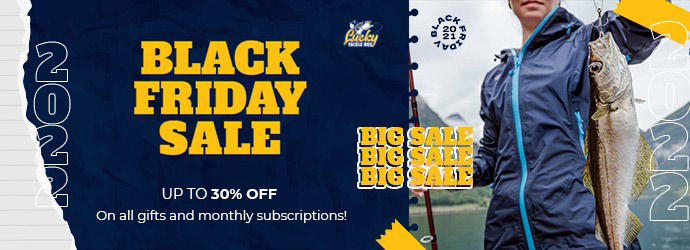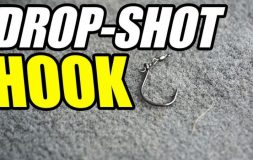Catching bass flipping in the jungle!!
Want to learn how to pull big fish out of the thickest, nastiest stuff on the water? Travis Moran dissects shallow water bass using the Strike King Rage Bug, a perfect match for heavy flipping.
* Transcript below:
Yeah boy! Holy cow! I like this. Guys, anytime the weather’s warm throughout the year, Spring, Summer, even in Fall, these fish are going to be up shallow where there’s vegetation, wood, or even just junk that’s washed up into the corner. There’s going to be fish underneath it. And you can either throw baits to the edges of that and catch some fish, or you can go straight into the thick stuff. And that’s what it’s all about today. We’re going to be using the Strike King Rage Tail Rage Bug. We’re going to open a big heavy weight, and we’re going to go right into the thick nasty stuff. So let’s get out on the water some more, and let’s go find some nasty vegetation and catch some nasty fish! There we go.
Oh, it just hit me in the knee. That bass is spawned out. There we go, guys. And this is going to be the perfect little time to talk about our setup. We got a little three to four ott flipping hook, one to one and a half ounce tungsten weight. That’s a one-ounce right there. And then a punch stop. You guys need some kind of thing that’s going to hold this weight against the hook because when this falls through the cover, you want it to pull the bait through as well. If you don’t have a punch stop, just the weight is going to fall through and that bait will still be on top. Then you rig up the Rage Craw Weedless.
Okay, some quick things about this bait itself. It’s the perfect profile to mimic the different bait that these fish are going to be feeding on in the heavy cover, from crawdad profile to bluegill, frogs, any of these different little forage species that these bass are going to be looking for in there. There is a perfect imitation. Then you’ve got these four little flappers on it, the four little legs, that you’ve got to separate before you use it. You’ve got four little legs that’s going to be kicking, and it creates a lot of action, which draws in strikes. Then this nice little ribbed body actually holds scent. You can really rub a bunch of scent on there. But also the ribbed body and the legs displace water. Anytime you have a lot of water displacement, that’s helping fish hone in and location this bait, but then also triggering the bite as well.
I’ve got … I usually use 60 to 80 pound braid. This is 80 pound braid right here, because you’re trying to throw it in the nastiest stuff you can find. That nasty stuff is where the big fish are going to be hanging out underneath. And you need to go get in a place where people aren’t at.
Then I’ve got a heavy rod. This right here is the seven foot six heavy Power Stik, so I can pull this fish out of the big water. That’s the whole point of it. Anyway, let’s get back to fishing. Let me show you guys how to flip this thing. It’s pretty easy. Pretty heavy stuff, but let’s break it down right now into retrieval.
All right. When it comes to retrieval, you’re basically just flipping it into any holes or any corners, any openings, you see. The thicker the stuff is, obviously the harder it’s going to be to get into it. So when you find … You know, we’ve got some pretty thick stuff right in front us of us here, this pennywort-looking stuff. So you’ve got to kind of find little holes and openings. What I like to do is I like to control. I want to be, I want to control that fall the whole time. So I’ll a little hole right here, and then as that bait sinks through I’m just going to slowly let it go to the bottom. What I do is I give it a little one hop, two hop, and then I’m off to the next target. I’m always looking ahead of myself right here to the next target, the next hole. Sometimes you can just shake it through a little bit. Once it goes through, you control that fall through, hop it once or twice, and now I see another hole about five feet down.
All right, guys. When you’re flipping, always be thinking what’s going on, right? So we’ve got these four little legs that are going to kick as this bait falls. So that’s why I want to control this fall. You shake it til it falls through, and then if you can now feel that line the whole way through you’re controlling that fall, you’ll feel when you get bit, because a lot of times, right when it comes through that cover, the fish has already honed in, feeling the vibrations. When it pops through, you get bit, you’ve got to be ready to set the hook. But once it hits the bottom, then I lift up, so that baits comes up, and I let it fall back down.
If you lift your rod tip six inches, that bait’s coming six inches off the bottom. If you move it a couple of feet, that bait’s going way up, way down. A lot of times that’s too much for these fish. They just need that bait going hop, hop.
Guys, it’s about three pounds. You can’t be afraid to go into the nasty stuff. This thing, I’m trying to figure out where to throw it. It’s anywhere you can’t throw anything else. Right now we’ve got trees behind us. We got tules. There’s hyacinth mixed in there. There’s even poison oak hanging off the shore in there. It doesn’t matter where … The fish will tuck up underneath anything. They like to be shallow because it’s easier for them to prey. There’s a lot more stuff up shallow. But the thing is, they don’t like being open water. They want cover. They want stuff to be able to ambush. So you can’t be afraid to get in the nasty stuff as well. And that’s what this bait is perfect at doing.
Some other things that you’ve got to pay attention to is where you’re catching your fish. Right now, if you look along this bank, there’s tons of structure and everything. Well, if I’m catching my fish every time I go by some tules, then you really want to make sure that you focus on those tules. You don’t have to just skip everything else, because I think there’s fish all the way along here. But when you come up to another patch of similar tules, make sure you give that a few more casts and really capitalize on that area. Then you can work a little bit faster until you come to another area that looks good to you. You’ve got to hone into those little things.
Lastly, when you’re fishing this pressured waters, you know, as bass fishing is growing, there’s a lot more people out there than there was when I first started bass fishing. You’ve got to think about what are these guys not fishing. And that’s when it becomes important to be very accurate with your flips. You’ve got to be able to get in these little targets that other guys can’t, a little bit farther back here, a little bit quieter.
But you can’t be afraid also to put your boat in there, your kayak, whatever, and dig down in there so you can get casts way back in where other guys aren’t. You’ve got to imagine … Sam, what are you doing, man? You’re making a mess back there. You’ve got to imagine that other people that come along, they do the same kind of flips. What are you doing different? What are you going to do to put that bait where fish haven’t seen it or fish haven’t actually seen any baits?
So that’s what we’re going to do right now, is I’m going to try to get some spots. I’m going to nose in here to try to make some more casts and catch some of these harder to reach fish.
Oh, there we go. There we go! Guys, it is so important to have a punch setup, something that, if you have a lot … I mean, this is easy. If you’ve got a lot of vegetation, you’ve got trees and everything, you want to be punching all day long, right? Even if you’re on lakes where there’s very little cover, you still need to have a punching rod ready to go so when you come up to that little bush, that little stretch, that there’s some flooded whatever, vegetation, pick up that punch rod. A lot of times, that’s where some of those bigger fish are going to be right in the middle of that stuff. So if you don’t have it ready, you’re going to throw around with a spinnerbait or whatever around the edges of it. But if you have that punch rod, you can go right up in the gut of that stuff and try to get some better fish.
Anyway, guys, the bait that’s perfect for that is something like this Strike King Rage Tail Rage Bug. It came in the latest Lucky Tackle Box. With all the little legs and everything, you’re putting off lots of action. You’re drawing in strikes. It’s the one you want to go into the deep stuff with.
Anyway, guys, Travis here. With luck I’ll see you on the next video. Hit the thumbs up. You should leave a comment because I make sure to respond to all your comments. I will see you later. And this has been special guest Sam. Sam, boy, did you just get mad at me? He got mad at me. He’s a little shy. Anyway, guys, I will see you later.










